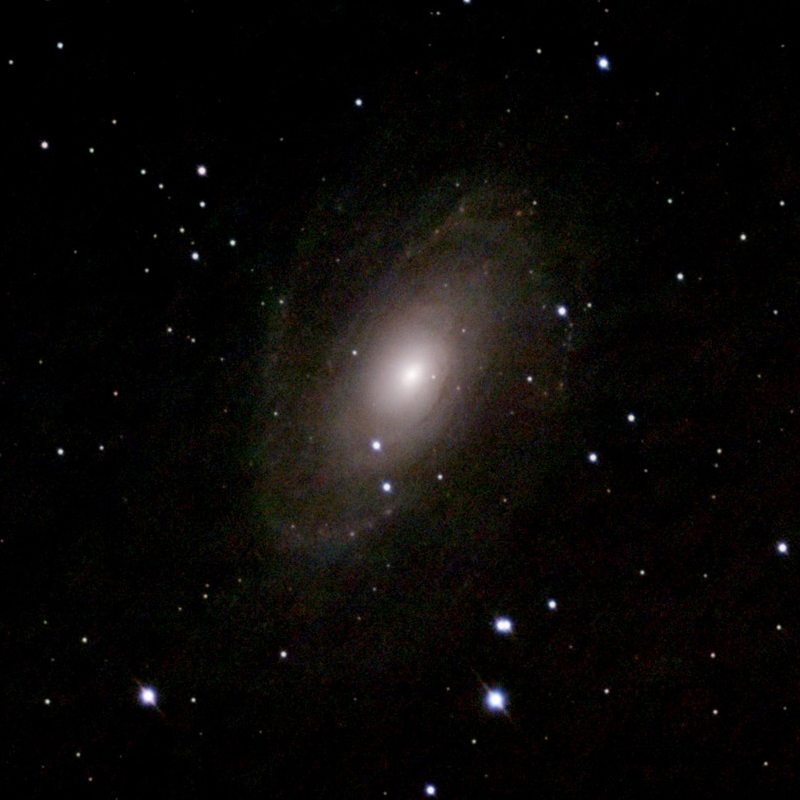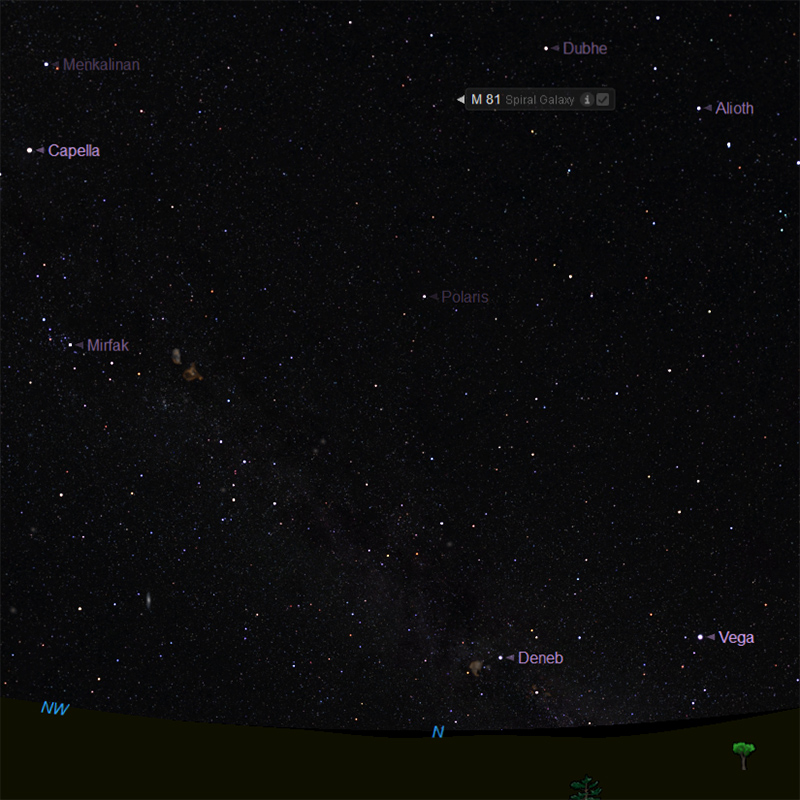M81 - Bode's Galaxy

Credits: Keith Turnecliff, Long Itchington
Messier 81 (M81), also known as Bode’s Galaxy, is a grand design spiral galaxy located in the constellation Ursa Major.
The galaxy lies at an approximate distance of 11.8 million light years from Earth and has an apparent magnitude of 6.94. It has the designation NGC 3031 in the New General Catalogue.
Messier 81 occupies an area of 26.9 by 14.1 arc minutes of apparent sky, which corresponds to a linear diameter of about 90,000 light years.
It can easily be seen in binoculars, which only show a dim patch of light, and is best viewed in larger telescopes, which reveal details of the galaxy’s spiral structure.
3-inch telescopes show M81 as a hazy, bright oval-shaped patch of light, while 6-inch telescopes reveal the galaxy’s bright core surrounded by a faint halo.
Bode’s Galaxy was named after Johann Elert Bode, the German astronomer who discovered it on December 31, 1774, along with the nearby Cigar Galaxy.
He described the pair as “two small nebulae 3/4 degrees separated”.
Facts about M81 by Keith Turnecliff
Several other members of the M81 Group, including the Cigar Galaxy (M82), are located in the same region of the sky. The Cigar Galaxy can be seen 38 arc minutes north of M81.
The two galaxies can easily be seen in binoculars and small telescopes, but are not visible to the naked eye.
M82 is smaller and fainter than M81, but is a wonderful example of a starburst galaxy and the two make a popular pair among astronomers.
8-inch and larger telescopes are required to make out the spiral structure in M81.
The galaxy can be seen from northern latitudes, but is invisible to southern observers, except for those living near the equator.
The best time of year to observe M81 is during the spring.

Best viewed with resolution 3840 x 2160. M81 and M82 in Stellina
Credits: Image courtesy of Starry Night Pro Plus 8, researched and implemented by Keith Turnecliff.